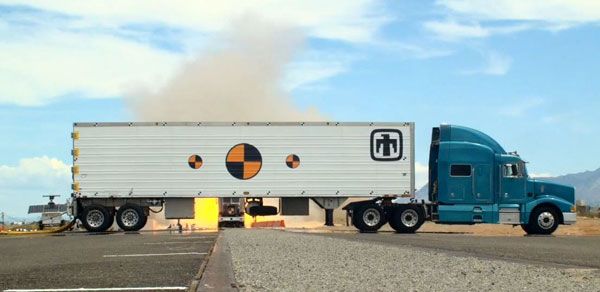
Prototype weapons transporter crash test
Sandia’s Mobile Guardian Transporter team met a major milestone with the first full-scale semi-tractor/trailer crash test conducted at Sandia in nearly two decades. A tractor trailer propelled to highway speeds by two rockets impacted MGT’s Prototype 1 during the test at Sandia’s 2K sled track facility ― even more remarkable because the test met a tight schedule despite challenges posed by the COVID-19 pandemic. The team collected over 400 channels of sensor and video data to assess nuclear explosive safety in over-the-road transportation. (1000, 6000)
Pulsed irradiation of photovoltaic cells
Photovoltaic cells subjected to high-radiation doses at Sandia’s SPHINX accelerator facility exhibited fast, sensitive responses at distances 20 times greater than the original project goal. PV cells harvest and convert solar energy. These test results demonstrated an improved capability to remotely sense short-pulse gamma radiation, which has national security implications. (6000)
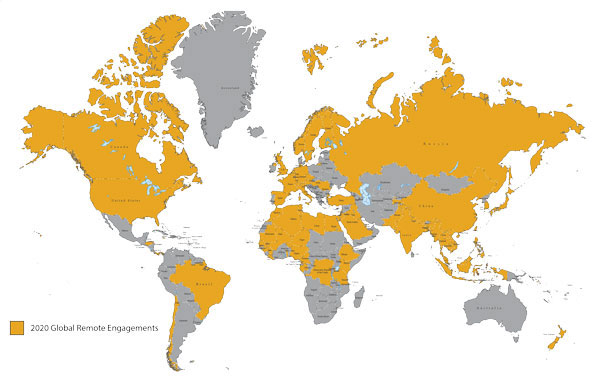
Pandemic doesn’t stop global engagements
In the face of COVID-19-related travel restrictions, the Center for Global Security and Cooperation pivoted rapidly to virtual platforms for international global threat reduction engagements. From April through September, the center hosted 93 virtual events with 3,220 attendees from 79 countries. International engagements included remote inspections of physical security upgrades to nuclear reactors in Nigeria, counter-unmanned aircraft system interactions with Korea and Belgium, and training courses on the safe and secure handling of SARS-CoV-2 specimens for diagnostic laboratories across the globe. (6000)
Enhanced Surety Program project
The Enhanced Surety Program project represents the commitment by Sandia to respond to critical national security challenges. A diverse team from across almost every division at the Laboratories rapidly responded to contribute expertise in design, qualification, production, acceptance and fielding to meet a priority requirement and deploy to DoD sites. (2000, 5000, 6000, 8000, 10000)
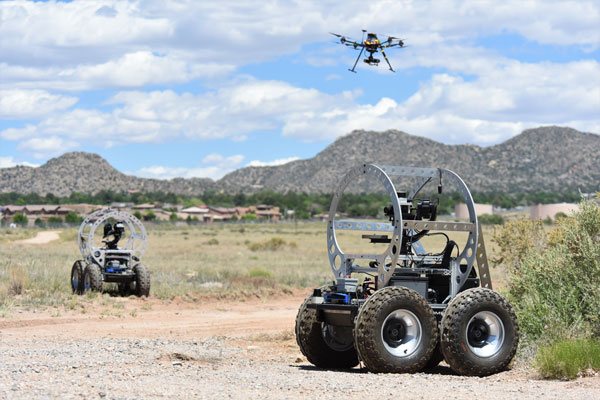
Autonomous detection and assessment research
A three-year research effort, the Autonomous Detection and Assessment with Mobile Sensing project, concluded in FY20, is laying the foundation for the role of mobile, unmanned systems in security systems of the future. ADAMS produced a new methodology for rapidly fusing sensor information from heterogeneous unmanned air and ground assets to autonomously discern approaching threats from non-threats. The methodology is being applied to other operational domains to allow rapid assessment of cluttered environments and provide decision makers with enhanced, more relevant information to improve situational awareness. (LDRD, 6000)
Virtual testbeds accelerate software development
Sandia developed a capability to virtually simulate physical information systems using a cluster of servers, virtual machine technology and automated provisioning technology. Virtual testbeds can now be created within minutes, allowing each software developer and tester on a large project to rapidly develop and test capabilities. More than 100 virtual testbeds are now in use across the U.S. Nuclear Detonation Detection System ground program, allowing work to proceed in parallel and avoiding the bottlenecks experienced with physical testbeds. (6000)
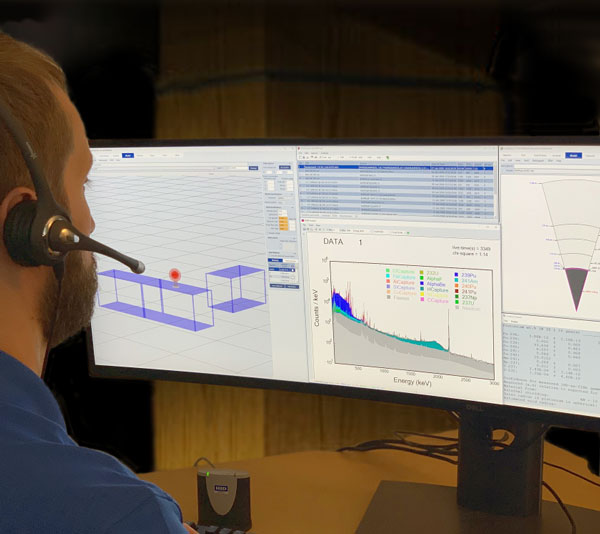
Radiation detection analysis software overhaul
Sandia completed a major overhaul of its Gamma Detector Radiation and Analysis Software, the cornerstone of many major radiation detection programs. Building on previous incremental updates, a team converted the Fortran programming language to modern coding techniques and designed an architecture and code structure to enhance readability, allowing developers to more quickly add new features and increasing the stability and maintainability of the code. The modernization also gives GADRAS programming and high-performance computing capabilities previously not possible. (6000)
Global Burst Detector deliverables
Global Burst Detector payloads aboard U.S. Air Force Global Positioning System satellites monitor and analyze remote signals from space in support of the nation’s nuclear detonation detection mission. The Sandia team supporting development of the next-generation payload, GBD IIIF, produced interface simulators and payload emulators in support of the Air Force’s risk-mitigation approach on an accelerated schedule, exceeding original NNSA expectations. This work is vital to ensure that the U.S. nuclear detonation detection capability remains safe and effective. (5000, 6000)
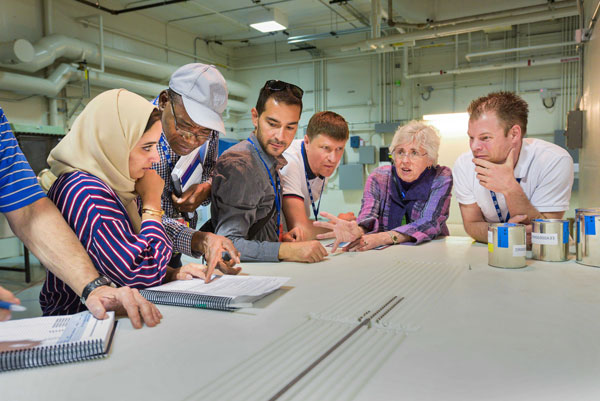
UNM nuclear security program launched
Sandia partnered with the University of New Mexico and Los Alamos National Laboratory to create a new, one-of-a-kind graduate school program in nuclear security engineering. Coursework will prepare students to incorporate nuclear security considerations into designs for new energy, defense and medical technologies. The new UNM program will give students a significant advantage in the field and broaden employment opportunities. The resulting pipeline of working professionals, with knowledge and skills cutting years of on-the-job training, will bolster nuclear security worldwide. (6000)
Array ensures chain of custody
Sandia and Savannah River Site nuclear safeguards engineers completed the design, fabrication and field testing of the prototype Transport–Remotely Monitored Sealing Array. The T-RMSA system enables monitoring of TRUPACT-II nuclear materials containers during transportation. The array’s fiber optic loop seal technology facilitates third-party verification that the chain of custody is not broken during transport of the containers. Field testing confirmed successful performance of the T-RMSA and delivery of the prototype to the Kansas City National Security Complex for manufacturing and production. (6000)
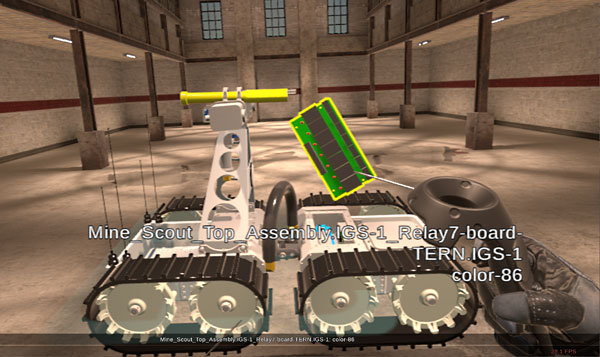
Virtual reality software developed and fielded
A Sandia team developed and launched software for importing computer-aided design models into virtual reality environments and interacting with them. Called CAD2VR, the copyrighted software is being shared with government agencies, several of which have used it to replace live training where the training was extremely hazardous or training venues were not available. The team worked with other Sandia organizations to develop plugins that extend CAD2VR’s functionality. One plugin, for example, enables importing computed tomography scans into virtual reality and examining them for defects. (6000)
Y-12 security enhancement design completed
Sandia completed final design for the West End Protected Area Reduction (WEPAR) project at the Y-12 National Security Complex in Tennessee. WEPAR is a system design and installation initiative to improve physical security at Y-12 while reducing the security and operational area footprints, thereby reducing long-term costs. The project, when completed, will include a number of security upgrades, including a new Perimeter Intrusion Detection and Assessment System and a new, modernized Entry Control Facility that will be the first of its kind in the NNSA complex. (6000)
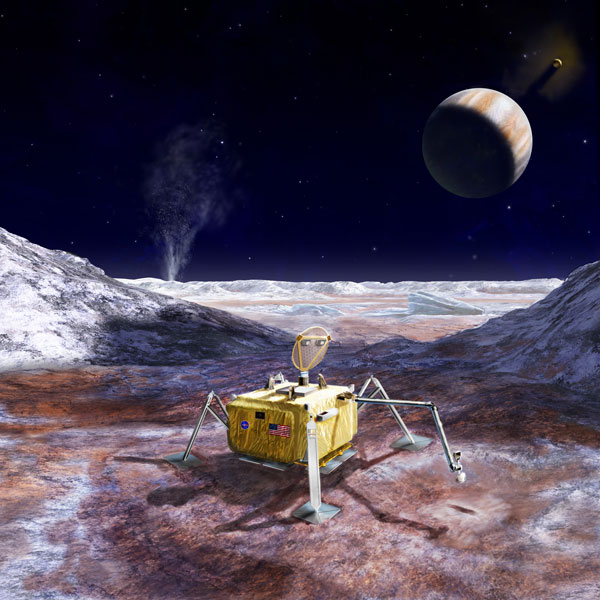
Europa Lander energetic material test
Sandia completed a milestone test in the development of a new energetic material for the Europa Lander Terminal Sterilization System. Sandia is collaborating with NASA and Jet Propulsion Laboratory to help solve the challenging problem of preventing biological contamination on the mission to search for life on Jupiter’s moon Europa. The TSS applies rapid heating using energetic materials to sterilize components and reduce the threat of contamination. Sandia is developing the technique for JPL because commercially available energetic materials do not meet mission requirements. (6000)
Radiological incident response management software developed
A Sandia team developed the Consequence Management Operational System, working with end users to replace an inadequate paper and email tracking system. COSMOS is Sandia-developed software that prioritizes and tracks requests for information received by the Federal Radiological Monitoring and Assessment Center, enabling more timely response to radiological or nuclear incidents. COSMOS improves the efficiency of the management of requests for information for FRMAC, the interagency entity that coordinates U.S. monitoring and assessment activities for radiological or nuclear incidents. (6000)